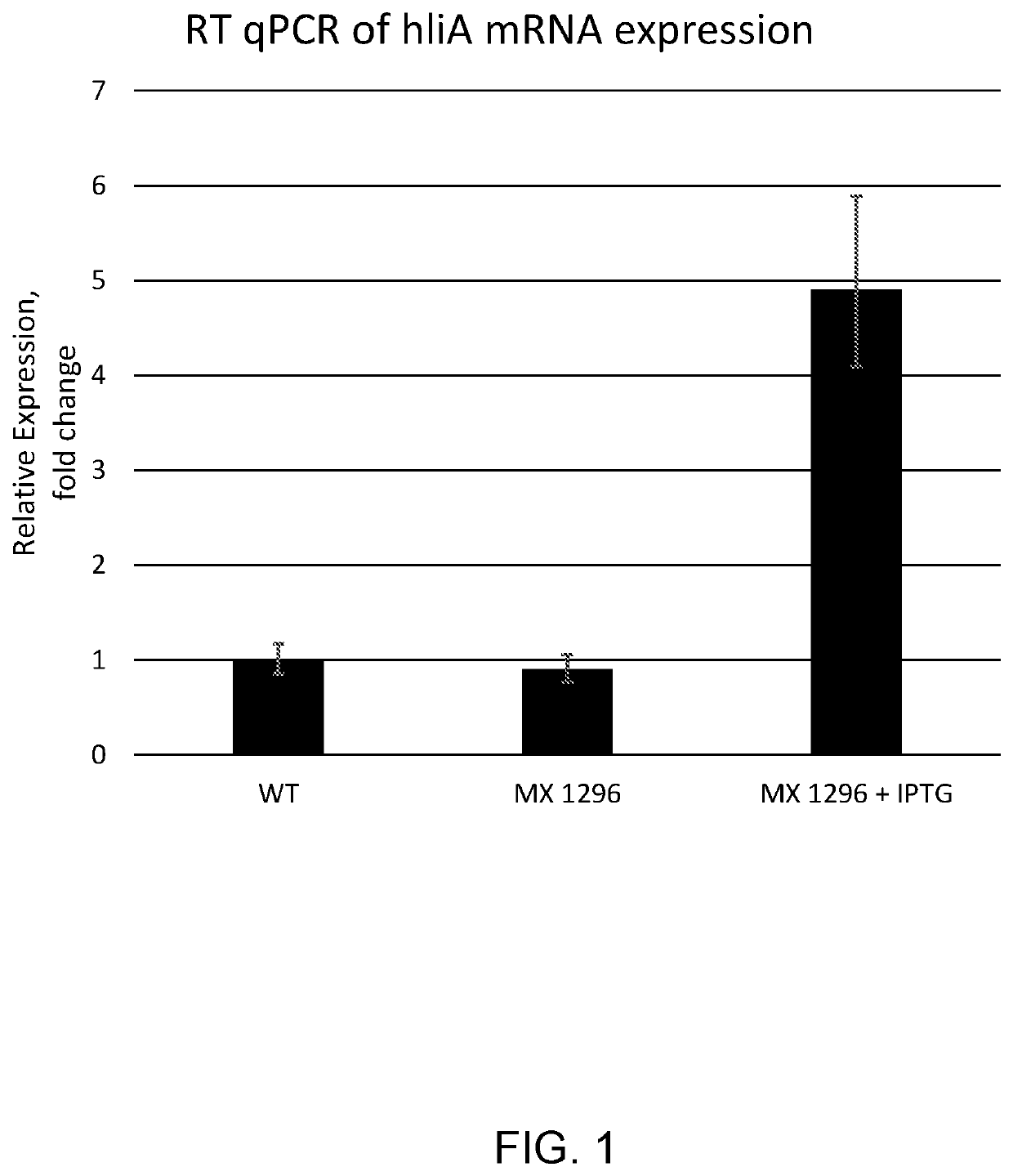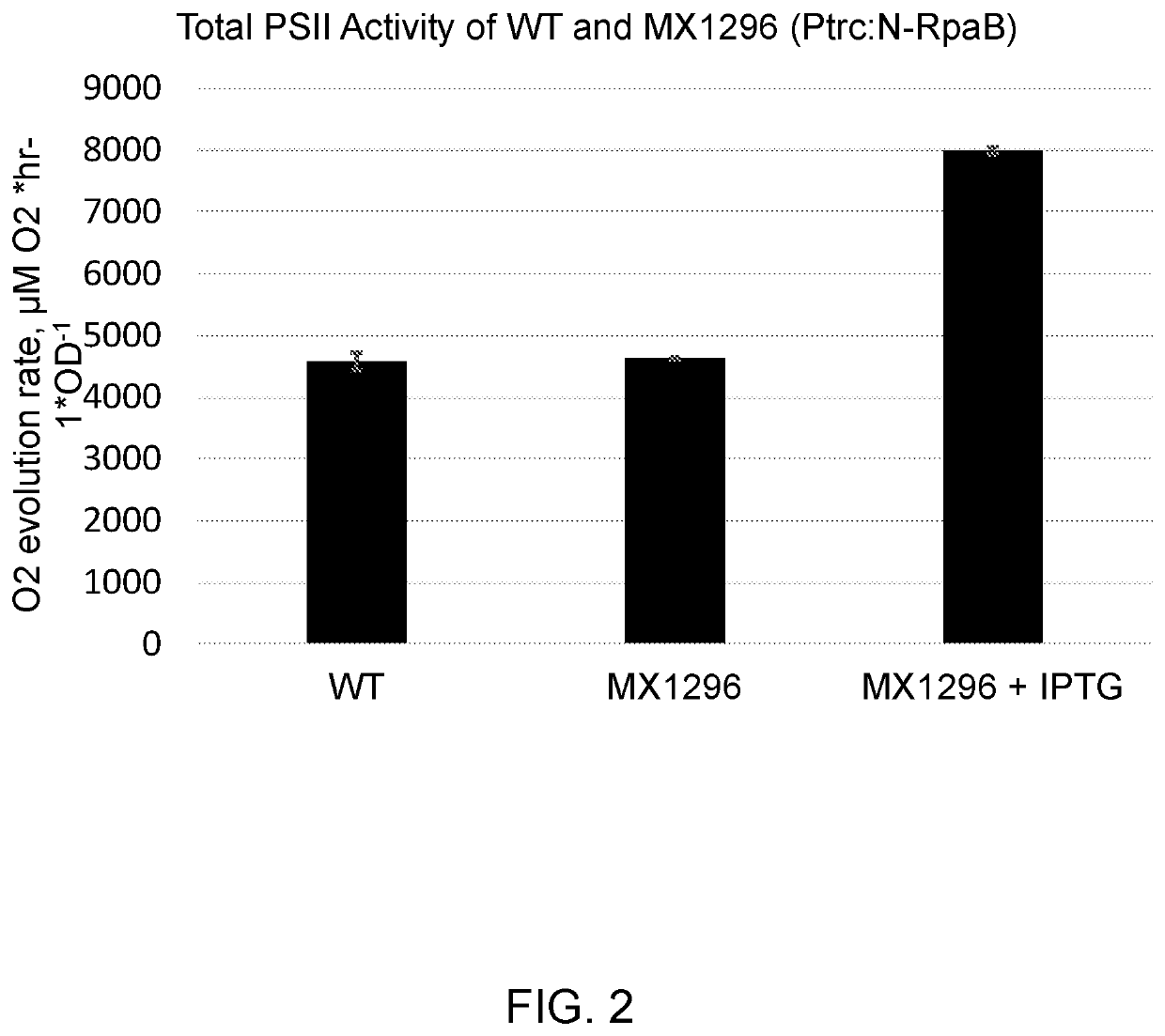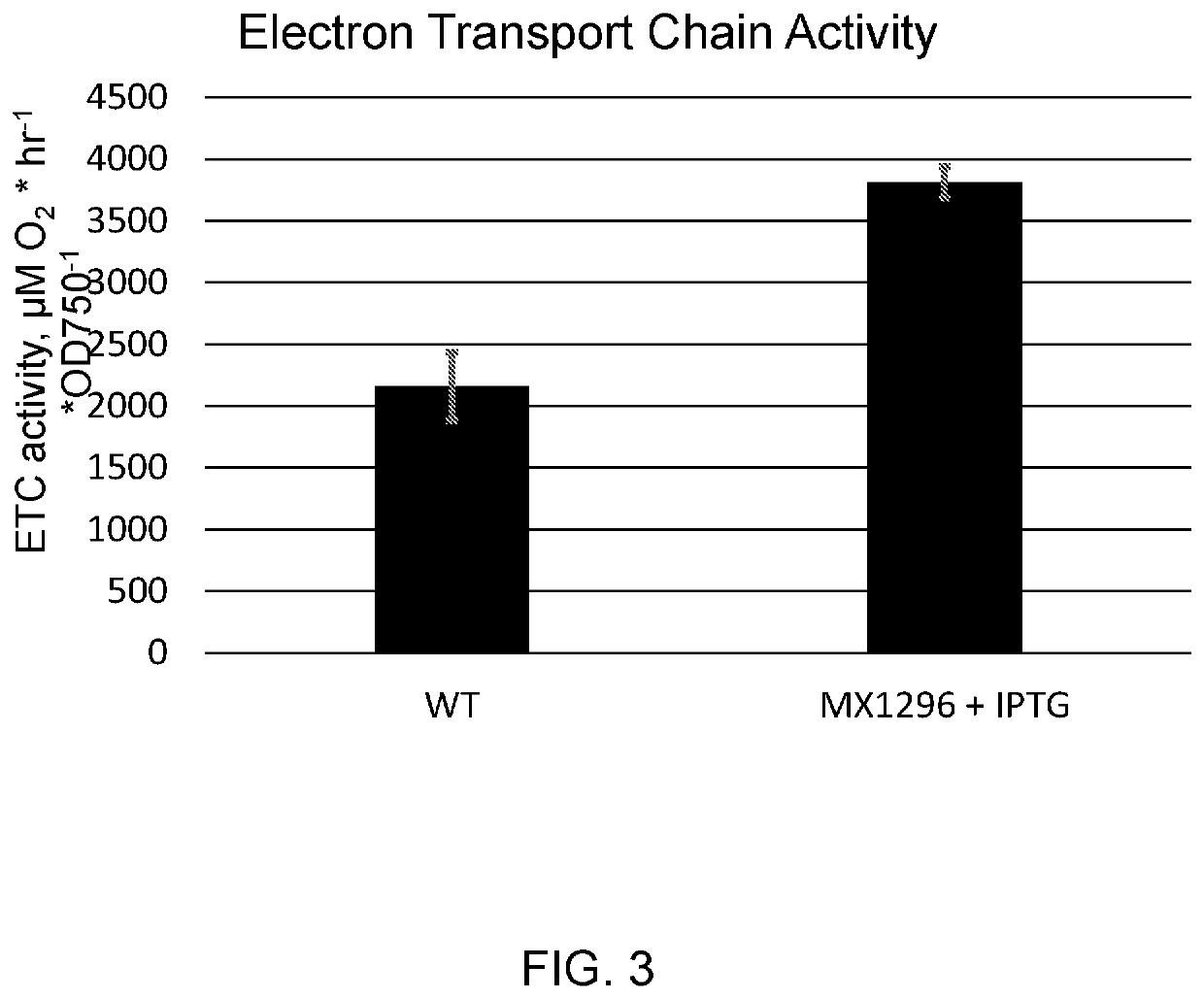Microorganisms with increased photosynthetic capacity
a technology of photosynthetic capacity and microorganisms, which is applied in the direction of bacteria peptides, viruses/bacteriophages, peptide sources, etc., can solve the problems of low biomass accumulation, and low yield per unit area of crops, so as to and increase the photosynthetic capacity
- Summary
- Abstract
- Description
- Claims
- Application Information
AI Technical Summary
Benefits of technology
Problems solved by technology
Method used
Image
Examples
Embodiment Construction
[0015]Photosynthesis is a process by which solar energy is converted into chemical bond energy. The overall reaction of photosynthesis is the light-driven conversion of carbon dioxide and water to glucose and oxygen:
6CO2+6H2O→C6H12O6+6O2
Photosynthesis is observed in plants as well as in bacteria, and blue-green algae.
[0016]The process of photosynthesis ultimately results in biomass accumulation. Biomass can be used to produce energy, fuel, chemicals, and food. As examples, bioethanol can be produced through alcohol fermentation of saccharified carbohydrate, and biodiesel oil and biojetfuel can be produced from neutral lipids such as waxesters and triglycerides. Further, photosynthesis processes environmental carbon dioxide.
[0017]Photosynthesis includes two stages called the light reactions and the dark reactions. The light reactions require the presence of light, while the dark reactions do not depend on direct light exposure. In the light reactions, sunlight is absorbed and drives...
PUM
| Property | Measurement | Unit |
|---|---|---|
| temperature | aaaaa | aaaaa |
| growth temperature | aaaaa | aaaaa |
| temperature | aaaaa | aaaaa |
Abstract
Description
Claims
Application Information
 Login to View More
Login to View More - R&D
- Intellectual Property
- Life Sciences
- Materials
- Tech Scout
- Unparalleled Data Quality
- Higher Quality Content
- 60% Fewer Hallucinations
Browse by: Latest US Patents, China's latest patents, Technical Efficacy Thesaurus, Application Domain, Technology Topic, Popular Technical Reports.
© 2025 PatSnap. All rights reserved.Legal|Privacy policy|Modern Slavery Act Transparency Statement|Sitemap|About US| Contact US: help@patsnap.com



